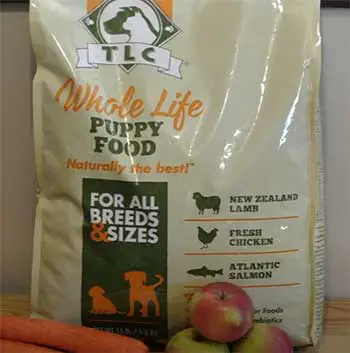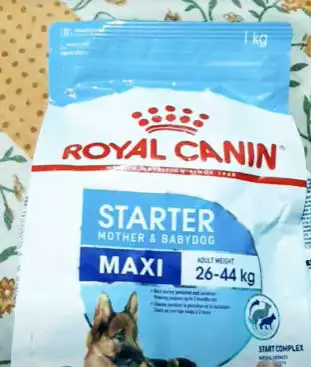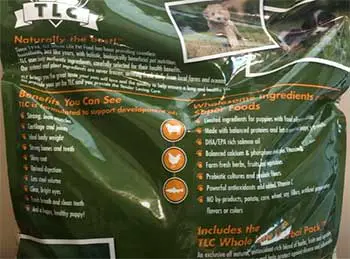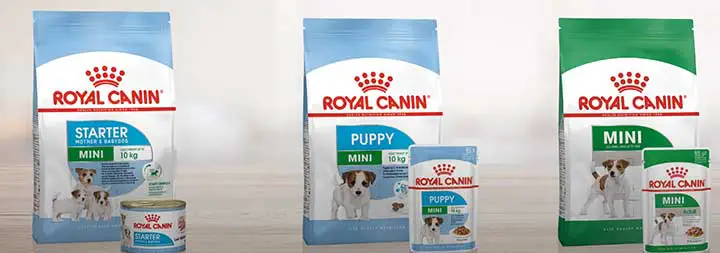When it comes to choosing the right dog food for your furry friend, you want to make sure you’re providing them with quality nutrition tailored to their specific needs. Two popular dog food brands on the market are TLC and Royal Canin.
But what are the key differences between these two options? Which one is better for your dog?
In this comprehensive guide, we’ll compare and contrast TLC and Royal Canin dog foods across a variety of factors including ingredients, nutritional analysis, brand reputation and quality control. We’ll also provide an overview table for easy side-by-side comparison shopping.
Read on to learn which brand may be the better choice for your dog.
TLC and Royal Canin Dog Food Comparison
| Category | TLC | Royal Canin |
| Types of dog food | Dry kibble, wet/canned food, baked treats | Dry kibble, wet/canned food, veterinary and prescription diets |
| Main protein sources | Chicken, lamb, fish | Chicken, lamb, fish |
| Grain-free options | Yes | No |
| Veterinary formulas | No | Yes |
| Production facilities | USA | France and USA |
| Testing protocols | In-house quality control | Research facilities around the world |
As you can see from the overview table, while both brands offer complete and balanced nutrition, there are some differences when it comes to ingredients, specialized formulas, manufacturing, and pricing. Now let’s dive deeper into each of these factors.
Ingredients and Nutrition Comparison
When comparing any dog food, the first thing you should look at is the ingredient list and guaranteed analysis panel.
TLC Dog Food Ingredients
TLC prides itself on using high-quality ingredients including:

- Real meat, poultry or fish as the first ingredient
- Whole grains like brown rice and oatmeal
- Fruits and vegetables for antioxidants
- Natural sources of glucosamine and chondroitin for joint health
- Probiotics and prebiotics for digestive regularity
They offer both grain-inclusive and grain-free recipes catered to dogs with different nutritional needs.
TLC avoids artificial colors, flavors and preservatives.
Royal Canin Dog Food Ingredients
Royal Canin also uses meat or poultry meals as primary protein sources. However, they incorporate more plant-based proteins like corn gluten meal rather than concentrating solely on animal proteins.
Other major ingredients in Royal Canin formulas include:
- Brewers rice
- Wheat, corn and soybean meals
- Chicken or pork by-product meals
- Fish and chicken oils for omega fatty acids
- Various vitamins and minerals
Royal Canin states that they rigorously test all ingredients for quality and safety. However, their formulas do tend to be more grain-heavy without many grain-free options. They also use some artificial flavors to enhance palatability.
When it comes to specific health conditions, Royal Canin offers tailored prescription diets formulated with veterinarian recommended nutrients. TLC does not offer prescription formulas.
Nutritional Analysis

Both brands conduct nutritional testing to formulate diets that meet AAFCO standards for complete and balanced nutrition.
Royal Canin owns multiple palatability centers and testing facilities to research dog food preferences and optimize taste.
This allows them to create diets that picky dogs are more likely to eat.
On the whole, TLC dog foods tend to have higher protein and fat content from animal sources than Royal Canin.
They also have fewer carbohydrates sourced from starchy grains.
So TLC takes a more meat-based approach while Royal Canin incorporates more plant-based proteins and fiber. Which is better comes down to your individual dog’s needs and sensitivities.
Comparison of Product Safety Standards
Today’s pet parents want reassurance that the ingredients and processes used to manufacture dog food are safe and high-quality. This is where quality control oversight and testing protocols become important.
- TLC Manufacturing Processes
TLC dry and canned foods are produced in company-owned manufacturing facilities in the USA. All ingredients must meet their strict supplier standards.
Their facilities follow hazard analysis critical control point principles with food safety and quality checks performed at regular intervals. Finished products are tested for nutrient content, bacteria, mold, mycotoxins and other contaminants.
- Royal Canin Manufacturing Processes
Royal Canin dry foods sold in the USA are produced in company-owned facilities in Missouri and South Dakota. Canned foods come from an independent co-packer.
Royal Canin also highlighted increased quality control testing in recent years to ensure strict standards are met. Like TLC, their facilities must comply with FDA regulations for pet food manufacturing.
Both brands have satisfactory track records when it comes to safely producing quality dog food. Royal Canin does undergo testing in more third-party laboratories around the world. But TLC’s smaller USA-based facilities may allow for more direct oversight.
Brand Reputation and History
When comparing pet food brands, it can be helpful to look at their history and reputation with consumers.
- TLC Pet Food History

TLC pet foods were launched in 1946 by the family-owned Tuffy’s Pet Foods.
They aim to produce “the world’s best food for dogs.”
TLC prides itself on keeping its manufacturing and sourcing within the USA.
Their facilities are located in Perham, Minnesota and have grown steadily over the years.
TLC Pet Foods was acquired by Purina in 2018 but continues to operate as an independent subsidiary. This acquisition brought more resources for distribution, research and marketing while maintaining the TLC brand identity.
Product reviews show most customers are very satisfied with the quality of TLC dog food and pricing. Complaints are rare but occasionally involve picky dogs who reject certain recipes.
- Royal Canin Company History
Royal Canin was founded in France in 1968 by a veterinarian committed to science-based pet nutrition. It’s now one of the top pet food companies worldwide, owned by Mars Petcare.
Royal Canin claims to formulate pet food with a dog’s nutritional needs as the top priority rather than cost or convenience. This appeals to many vets and owners willing to pay premium prices for quality nutrition.
While some dislike Royal Canin’s globalized production and inclusion of by-products, many customers are devoted to the brand for specialized formulas that aid medical issues. Lawsuits against Royal Canin are very uncommon.
So while TLC has maintained a family-owned approach with American sourced ingredients, Royal Canin operates globally with larger R&D budgets. Both enjoy mostly positive reputations and satisfied customers.
Pricing and Budget Considerations
When comparing pet foods, your budget also plays a role. Royal Canin prices are noticeably higher than TLC on average. Here are some representative prices:
- TLC 40 lb bag dry dog food: $40-$60
- Royal Canin 40 lb bag dry dog food: $90-$140
Pricing can fluctuate based on formula, retailer promotions and location. But Royal Canin generally costs 50-100% more than TLC dog foods.
Royal Canin justifies higher prices based on scientific research, quality control testing, specialized nutrition and premium ingredients like fish oil.
TLC is able to offer quality nutrition at a more affordable price point. But specialty Rx diets will need to come from another brand.
So consider your budget constraints along with your dog’s needs when choosing between these brands. Those wanting premium veterinary formulas may prefer Royal Canin if cost is not a limiting factor.
Which Is Better For Your Dog?

Now that we’ve compared these two popular brands across a range of factors, let’s summarize the key differences and situations when one may be preferable over the other:
Choose TLC if you want:
- Grain-free recipes
- Meat-focused ingredients
- American-made formulas
- Affordable pricing for quality nutrition
Choose Royal Canin if you want:
- Veterinary prescription diets
- Specialized formulas for health conditions
- Premium ingredients and rigorously tested recipes
- Brand with long-standing reputation
For the average healthy dog without special dietary needs, both brands offer complete nutrition. I’d give a slight edge to TLC for their grain-free options focused on high animal protein content. But Royal Canin is unmatched for therapeutic diets.
Talk to your veterinarian about whether your dog would benefit from specialized nutrition if dealing with certain medical problems. They can provide tailored recommendations.
The most important thing is choosing a high-quality pet food within your budget that your dog enjoys and thrives on. Hopefully this detailed comparison gives you the information needed to make the right choice between TLC and Royal Canin for your pup!
Frequently Asked Questions (FAQ)
Yes, TLC dog food is very high quality nutrition for dogs. Their recipes use premium proteins like chicken, lamb, turkey and salmon. Whole grains and veggies provide balanced fiber and nutrients. TLC avoids artificial additives and focuses on quality nutrition at an affordable price point. Their manufacturing facilities follow strict quality and safety protocols as well. Overall, TLC is a great choice for those wanting good quality dog food on a budget.
There is no definitive “number one” vet recommended brand as nutritional needs vary by dog. But some brands vets frequently recommend include Royal Canin, Hill’s Science Diet, Purina Pro Plan and Iams. These companies produce science-backed formulas and therapeutic diets for specific health conditions. Foods like Royal Canin also go through extensive palatability testing to ensure dogs enjoy the taste. Checking with your own vet about your dog’s needs is the best way to choose the right food. But these brands are often at the top of vets’ lists.
There are a few reasons some owners choose to avoid Royal Canin:
1. High price point
2. Inclusion of corn, wheat, soy and by-products
3. Misconception about quality due to global mass production
4. Preference for grain-free recipes (which Royal Canin lacks)
However, Royal Canin claims that ingredients like corn and by-products are highly digestible and safe when processed properly. And Royal Canin does conduct extensive testing and research to formulate nutritionally balanced diets. So there are no glaring health reasons to absolutely avoid this brand, though the higher cost and grain-heavy recipes may deter some buyers. As with any pet food, look at your individual dog’s needs and preferences. For dogs with no food sensitivities or health issues, more affordable grain-free brands like TLC can be a suitable alternative to Royal Canin.
TLC dog food is manufactured by Tuffy’s Pet Foods, which is a family-owned company based in Perham, Minnesota. They have produced TLC dog food since 1946 and take pride in keeping their sourcing and production within the United States. Tuffy’s Pet Foods was acquired by Purina in 2018 but continues to operate independently. They manufacture TLC formulas in their own facilities in Perham according to strict safety and nutrition standards. So you can feel good about TLC dog food coming from a trusted American company with over 75 years of experience making quality nutrition for pets.
Final Thoughts
TLC and Royal Canin both offer nutritious and balanced dog food formulas. But there are some key differences between these two brands in terms of ingredients, manufacturing, specialized diets and pricing.
TLC dog foods are more affordable while focusing on quality American-sourced proteins. Their grain-free recipes cater to many breeds and health needs.
Royal Canin costs more but provides therapeutic diets and intense palatability testing. This brand is ideal for dogs with certain health conditions.
To choose the best brand for your dog, consider your budget, your dog’s preferences and any medical needs recommended by your vet. Both TLC and Royal Canin make quality recipes that dogs enjoy – identifying the right one comes down to tailoring nutrition to your pup.
